- Joined
- Mar 8, 2008
- Messages
- 25,491
Splitting the pics up to help with downloading the page. Best thing about these is the fact that (except for the handles I'll have to buy) these were free.




I love it! Very well done!
I have a couple old army shovels that I'm fond of. They haven't been restored, just cleaned up and oiled. The one with the pick is Korean made but never the less is very sturdy. It's my 'keep behind the seat of the truck' shovel. The other is a genuine WWII Ames army shovel. It's my favorite and stays with my camping gear.

Novel and lovely re-cycle and re-use project! Unfortunately fired-clay bricks don't fare well on or in the ground and subject to frost. Up my way the current Nat'l Building Code requires clay brick only to be used minimum 1/2 meter (20") away from water or soil contact. I've used scavenged clay bricks a few times over the past 50 years (foundation and floor of an elaborate but scavenged materials-made pigeon coop was my first time, back in 1965) and all of them spalled into loose chips quick and eroded into coloured dirt within a decade. Constant freeze/thaw cycles are the real killer for moisture-soaked bricks. Cement (ie concrete) bricks (or 'pavers') are what is recommended for these situations and those do hold up well.
You're spot on as usual, 300.Novel and lovely re-cycle and re-use project! Unfortunately fired-clay bricks don't fare well on or in the ground and subject to frost. Up my way the current Nat'l Building Code requires clay brick only to be used at least 1/2 meter (20") away from water or soil contact. I've used scavenged clay bricks a few times over the past 50 years (foundation and floor of an elaborate but inexpensive pigeon coop was my first time, back in 1965) and all of them spalled into loose chips and eroded into coloured dirt within a decade. Constant freeze/thaw cycles are the real killer for moisture-soaked bricks. Cement (ie concrete) bricks (or 'pavers') are what is recommended for these situations and those do hold up well.
It's funny, most people wouldn't spend even a moment doing maintenance on a shovel. But the payoff in performance is great. It you come across a quality vintage shovel with great steel and a closed back (to prevent mud/clay build-up) then you have a wonderful tool for life. They're easy to rehandle, though that's seldom necessary if you put a good one on it and use it with just a little care - shovels aren't pry bars.I could hear my late Dad's voice..."Cholly, (from Brooklyn) , take care of your tools and
they will take care of you". So, $2.00 (yard sale) shovel... wire brushed, edge refreshed,
oiled blade, and, peened the rivets tight (multiple healthy whacks with 2 3/4 # hammer).
Then, coated with BLO.... should last for years .
Charles
https://imgur.com/a/yBle9MC
It's funny, most people wouldn't spend even a moment doing maintenance on a shovel. But the payoff in performance is great. It you come across a quality vintage shovel with great steel and a closed back (to prevent mud/clay build-up) then you have a wonderful tool for life. They're easy to rehandle, though that's seldom necessary if you put a good one on it and use it with just a little care - shovels aren't pry bars.
Just tightening the rivets as you just did is often all that's necessary. Oh, and a little file work now and then.
I have several good old split socket shovels that i use and love. I also have a couple of heads that need handles, one being a #3 round point. I've never seen but one. I need to make a couple of handles for them but I really need a socket pattern to bend the wood. Everytime I stop at a flea market i hope to find an old strapped head that has a short piece of handle that isn't rotted out for a pattern.Unless you need a new handle for an old strapped-style shovel. I have one that belonged to my grandfather and while the handle is sound currently, if it ever breaks I'd have to self-fabricate a handle for it 'cause to the best of my knowledge no one makes replacements for those off the shelf anymore.
Everytime I stop at a flea market i hope to find an old strapped head that has a short piece of handle that isn't rotted out for a pattern.
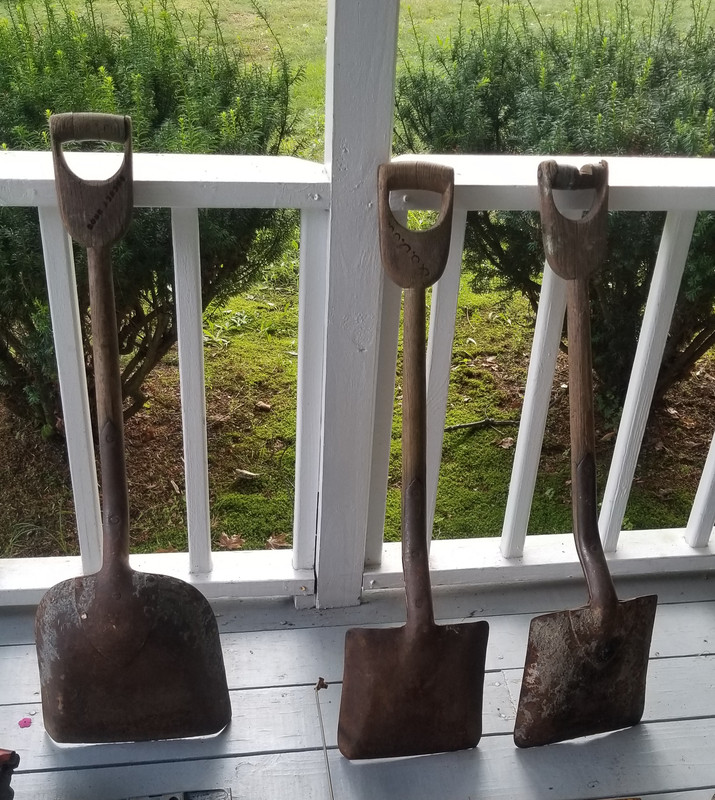
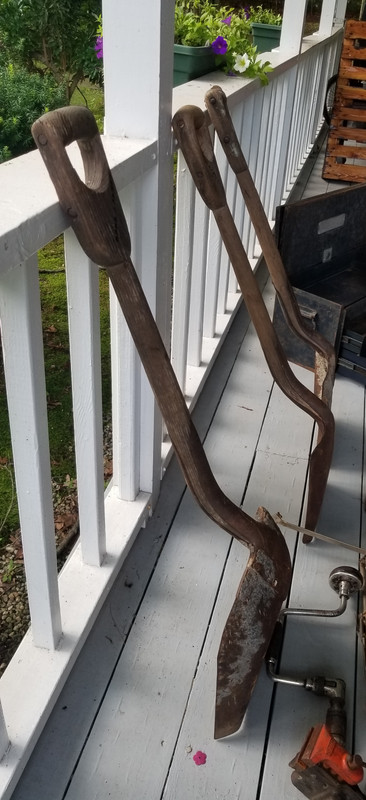
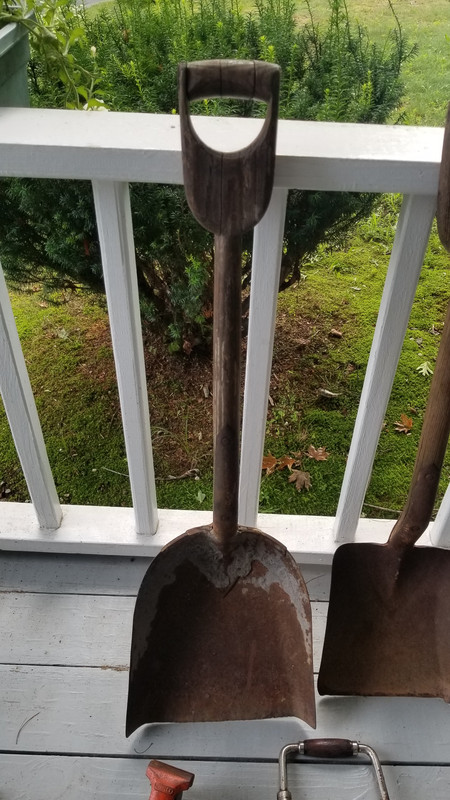
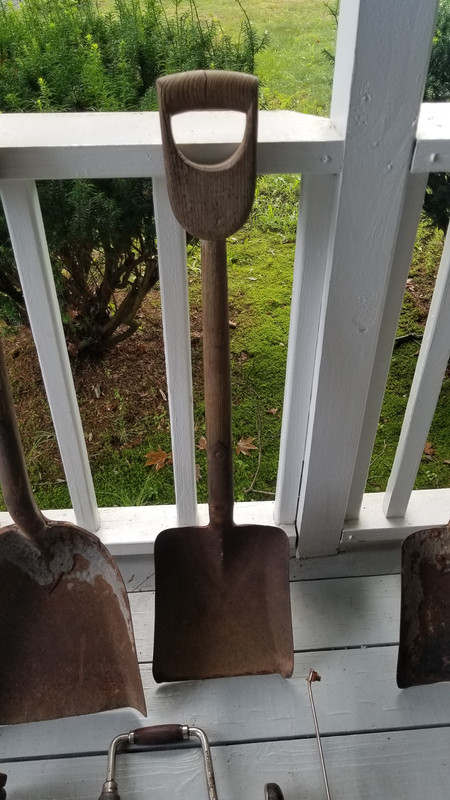
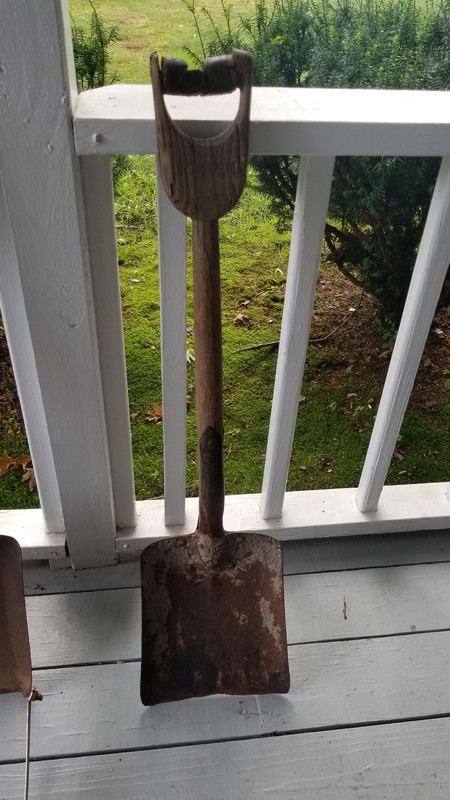
Those are some interesting handles. What brand, and any idea what era these are from?I hope you like these as much as I do...
